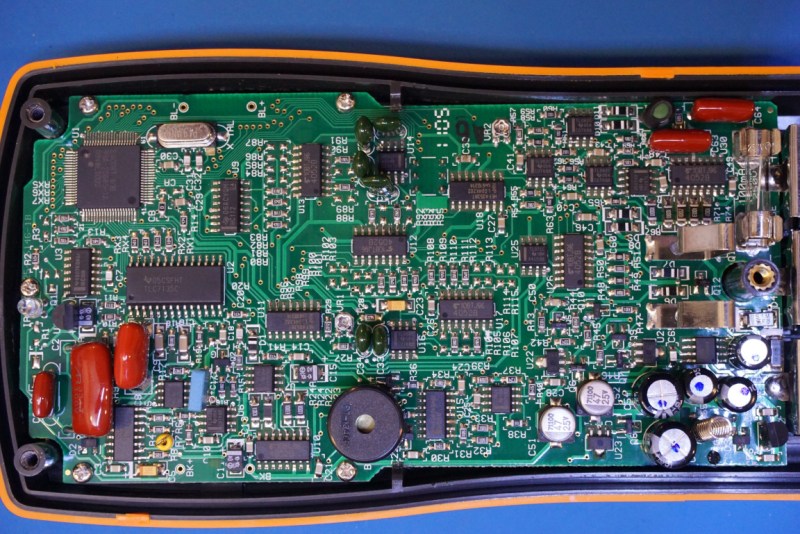Since 1999, one of the more popular manufacturers of test equipment has been Agilent, the spun-off former instrument division of Hewlett-Packard. From simple multimeters to fully-equipped oscilloscopes, they have been covering every corner of this particular market. And, with the help of [Kerry Wong] and his teardown of an Agilent LCR meter, we can also see that they’ve been making consistent upgrades to their equipment as well.
The particular meter that [Kerry] took apart was an Agilent U1731B, a capable LCR (inductance, capacitance, resistance) meter. He had needed one for himself and noted that while they’re expensive when new, they can be found at a bargain used, but that means dealing with older versions of hardware. For example, his meter uses an 8-bit ADC while the more recent U1733 series uses a 24-bit ADC. The other quality of this meter that [Kerry] made special note of was how densely populated the circuit board is, presumably to save on the design of a VLSI circuit.
While we don’t claim to stump for Agilent in any way, it’s good to know that newer releases of their equipment actually have improved hardware and aren’t just rebadged or firmware-upgraded versions of old hardware with a bigger price tag attached. Also, there wasn’t really any goal that [Kerry] had in mind besides sheer curiosity and a willingness to dive deep into electronics details, as those familiar with his other projects know already.
















Between 1999 and 2014, you mean. Since 2014 the test and measurement products have been under the Keysight name.
You write as though Agilent still makes that kind of stuff. They spun that business off again a couple years ago, now it’s Keysight.
I guess they got tired of the Agilent anagram, “genital”.
Weird flex but OK.
I currently work for the “new” Agilent (biotech / scientific only). Never knew this fact, but definitely goes well with our sphincter logo. Nice
Just checked on FleaBay and the 42xx series are all under $1k but the newer ones…oh my.
How does this all stack up against the latest offering from across the Pacific for a Benjamin or less, and why would the average fiddler-with-electrons need it?